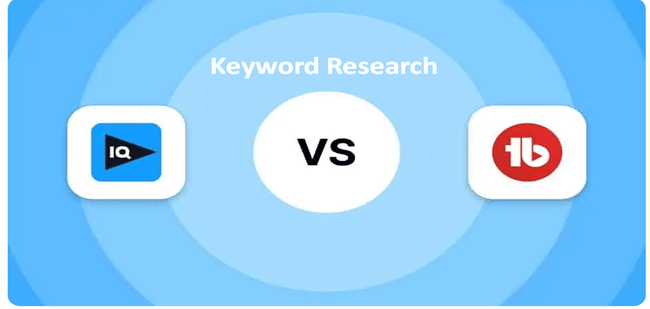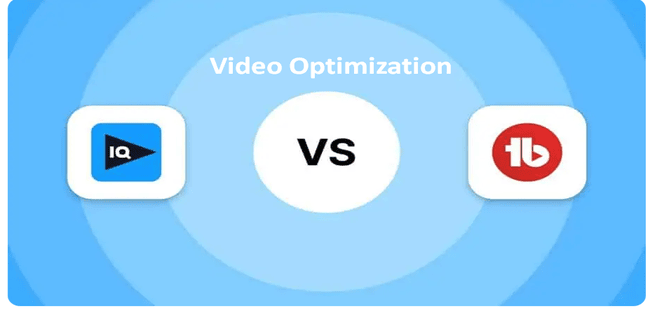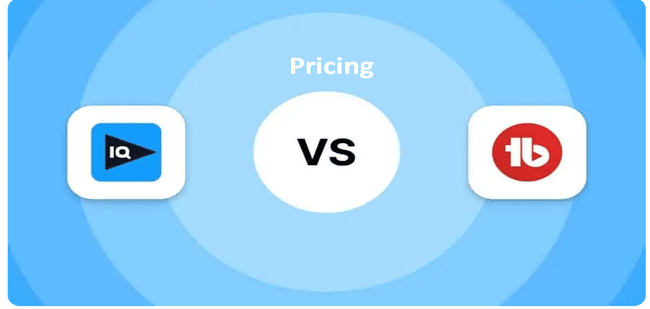vidIQ and tubebuddy

Overview :
vidIQ and TubeBuddy are popular YouTube optimization tools that enhance video SEO through features like keyword research, analytics, and trend insights. While vidIQ focuses on competitor analysis and viewer engagement metrics, TubeBuddy offers in-depth keyword tracking, A/B testing, and productivity tools, catering to both beginner and advanced creators.
Tags: thumbshots tubebuddy Video SEO vidIQ vidiq vs tubebuddy
Keyword Research – VidIQ vs TubeBuddy
Overview of YouTube Video Keyword Research for Video SEO
YouTube video keyword research is essential for video SEO, helping creators identify relevant terms that audiences search for. By using optimized keywords, creators can improve video visibility, increase engagement, and attract more viewers. Tools like vidIQ and TubeBuddy are widely used for keyword research, helping creators discover high-traffic, low-competition terms.
Comparison of vidIQ and TubeBuddy for YouTube Video Keyword Research
- Keyword Suggestions and Search Volume
– vidIQ: Provides real-time search volume data and suggests keywords based on trending topics. Its data-rich interface shows search volume, competition score, and overall keyword score, which helps optimize keywords precisely.
– Pros: Detailed keyword insights with trend tracking.
– Cons: Search data may be overwhelming for beginners.
– TubeBuddy: Offers keyword suggestions with volume and competition scores, including a weighted score that considers the specific channel’s performance.
– Pros: Personalized keyword scores based on channel analytics, making it ideal for niche audiences.
– Cons: Keyword data may be less extensive than vidIQ.
- Competitor Keyword Analysis
– vidIQ: Allows for in-depth competitor keyword analysis, showing keywords used in other channels’ videos, along with their ranking performance.
– Pros: Strong competitor analysis features for identifying effective keywords.
– Cons: Premium plans required to unlock advanced competitor data.
– TubeBuddy: Has a basic keyword inspector, showing popular keywords competitors use, though it lacks advanced competitive ranking details.
– Pros: Useful for basic competitor analysis.
– Cons: Limited information on competitor keyword ranking performance.
- Tag Suggestions
– vidIQ: Automatically suggests relevant tags and offers insights into which tags drive the most traffic.
– Pros: Comprehensive tag suggestions, particularly helpful for video discoverability.
– Cons: More useful for larger channels where tags have a more noticeable impact.
– TubeBuddy: Provides tag suggestions and a tag explorer, showing top tags related to a keyword, with high customization options.
– Pros: Easy to use and suited for channels of all sizes.
– Cons: Tag relevance data can be less precise than vidIQ’s.
- SEO Score and Optimization Recommendations
– vidIQ: Offers a detailed SEO score for each keyword and optimization checklist for better ranking.
– Pros: Comprehensive optimization recommendations that include title, description, and tag alignment.
– Cons: SEO score can be influenced by general channel metrics, which may not be relevant for all keywords.
– TubeBuddy: SEO Studio tool guides users in optimizing titles, descriptions, and tags specifically for YouTube’s search algorithm.
– Pros: Simplified optimization suggestions make it beginner-friendly.
– Cons: Less in-depth SEO scoring compared to vidIQ’s detailed feedback.
- User Interface and Ease of Use
– vidIQ: Designed with data-driven users in mind, its layout offers detailed insights but can appear cluttered to new users.
– Pros: Excellent for data-oriented creators who prefer deep analysis.
– Cons: Steeper learning curve for beginners.
– TubeBuddy: User-friendly and simpler in design, with easily accessible features suitable for beginners and advanced users alike.
– Pros: Intuitive, beginner-friendly layout with straightforward navigation.
– Cons: Advanced features sometimes require additional setup.
In summary, vidIQ is ideal for users focused on detailed data analysis and competitor insights, while TubeBuddy provides a user-friendly approach with practical features for beginners and established creators. Both tools offer unique strengths, so the choice depends on the creator’s familiarity with data analytics and specific SEO needs.
Video Optimization – VidIQ vs TubeBuddy
Overview of YouTube Video Optimization for Video SEO
YouTube video optimization is essential for improving visibility and ranking in search results, thereby attracting more viewers. Optimization involves using targeted keywords, engaging thumbnails, optimized titles, and descriptions, as well as utilizing tags, captions, and end screens. Tools like vidIQ and TubeBuddy assist with these elements, offering insights and tools to help creators boost their content’s SEO and engagement.
Comparison of vidIQ and TubeBuddy for YouTube Video Optimization
- Title and Description Optimization
– vidIQ: Provides an SEO score based on title and description relevance, along with keyword recommendations to increase visibility.
– Pros: Highly detailed SEO score and keyword relevance suggestions.
– Cons: SEO score may be complex for beginners to interpret effectively.
– TubeBuddy: Includes an SEO Studio, which guides users in crafting optimized titles and descriptions with keyword integration.
– Pros: Simple, guided process for title and description optimization.
– Cons: Less depth in score analytics compared to vidIQ.
- Tag Optimization and Suggestions
– vidIQ: Offers comprehensive tag suggestions with real-time data on the effectiveness of each tag for ranking.
– Pros: Detailed tag data helps optimize tag choices for visibility.
– Cons: Requires paid plans for advanced tag insights.
– TubeBuddy: Provides a Tag Explorer that suggests relevant tags based on search traffic and competition, along with bulk tag management.
– Pros: Tag Explorer is user-friendly and allows for bulk tag editing.
– Cons: Tag suggestions can be limited for specific niche topics.
- Thumbnail Analysis and A/B Testing
– vidIQ: Lacks built-in A/B testing but offers thumbnail analysis based on click-through rates and user engagement data.
– Pros: Click-through rate (CTR) insights assist in thumbnail effectiveness analysis.
– Cons: Lacks A/B testing, making it harder to directly compare thumbnail versions.
– TubeBuddy: Includes A/B testing for thumbnails, allowing creators to test different designs and determine which performs better.
– Pros: Comprehensive A/B testing improves optimization of thumbnails for higher CTR.
– Cons: A/B testing is only available in higher-tier plans.
- End Screens and Cards Optimization
– vidIQ: Provides analytics on end screen and card performance but lacks guided recommendations for their placement.
– Pros: Shows data on how end screens and cards impact retention and engagement.
– Cons: Limited in providing direct suggestions for optimizing placements.
– TubeBuddy: Features an end screen template tool and detailed card recommendations, guiding creators in optimal placement.
– Pros: Convenient templates and placement suggestions for enhanced user engagement.
– Cons: Template options are limited in the free version.
- Real-Time SEO Score and Checklist
– vidIQ: Displays an SEO score with an in-depth checklist that covers title, description, tags, and engagement elements.
– Pros: Detailed, real-time SEO scoring system for quick optimizations.
– Cons: Can feel data-heavy for beginners unfamiliar with SEO metrics.
– TubeBuddy: The SEO Studio checklist provides step-by-step tasks for optimizing videos, focusing on keywords, tags, and audience engagement.
– Pros: User-friendly checklist that simplifies video optimization steps.
– Cons: Lacks the level of real-time scoring detail found in vidIQ.
- Competitor Analysis for Optimization Insights
– vidIQ: Enables detailed competitor tracking, showing keywords, tags, and optimization strategies used in competitor videos.
– Pros: Effective for gaining insights on competitor optimization strategies.
– Cons: Full competitor analysis tools are limited to premium plans.
– TubeBuddy: Provides basic competitor comparisons, displaying optimization data but without the advanced analytics found in vidIQ.
– Pros: Simple competitor insights for learning from other channels.
– Cons: Lacks in-depth competitive data analytics.
Summary
vidIQ is ideal for creators focused on data-driven optimization, with deep insights into SEO scores, competitor analysis, and tag performance. TubeBuddy, on the other hand, excels in its user-friendly approach, with A/B testing for thumbnails and intuitive tools like SEO Studio. Creators can choose based on their need for detailed data (vidIQ) or ease of use and functionality (TubeBuddy).
Pricing – VidIQ vs TubeBuddy
Overview of Pricing for vidIQ and TubeBuddy
vidIQ and TubeBuddy offer tiered pricing plans to cater to both beginner and advanced YouTube creators, with free versions providing basic optimization tools and paid plans unlocking advanced features. Pricing structures vary, with each tool offering unique features that appeal to different needs.
Comparison of vidIQ and TubeBuddy Pricing
- Free Plan
– vidIQ: Offers a free plan with limited access to basic keyword research, trending videos, and channel analytics.
– Pros: Useful for beginners who need basic analytics and keyword suggestions.
– Cons: Limited functionality; core features like competitor analysis are locked behind paid plans.
– TubeBuddy: Provides a free plan with basic tools, including limited keyword research and productivity tools.
– Pros: Includes basic SEO tools and some productivity features.
– Cons: Heavier restrictions compared to paid plans, especially on research and A/B testing features.
- Basic Paid Plans
– vidIQ: The Pro plan starts at around $7.50/month, offering enhanced keyword tools, real-time stats, and improved analytics.
– Pros: Low-cost entry plan ideal for small creators looking to expand beyond the basics.
– Cons: Pro plan lacks competitor analysis and advanced features found in higher-tier plans.
– TubeBuddy: The Pro plan starts at about $4.99/month, including tools for tag suggestions, keyword explorer, and productivity features.
– Pros: Very affordable starting plan with good functionality for small channels.
– Cons: Limited advanced SEO features and A/B testing at this price point.
- Mid-Tier Plans
– vidIQ: The Boost plan starts at $39/month, offering deeper analytics, competitor tracking, and advanced keyword insights.
– Pros: Suitable for creators aiming to grow their channels with comprehensive SEO and competitive insights.
– Cons: Higher cost may be prohibitive for smaller channels or budget-conscious creators.
– TubeBuddy: The Star plan is priced around $9/month, offering bulk processing tools, advanced scheduling, and in-depth keyword research.
– Pros: Affordable compared to vidIQ’s Boost, with useful bulk editing and more advanced features.
– Cons: Lacks some competitive insights found in higher-tier plans.
- Advanced Plans
– vidIQ: The Boost+ plan costs approximately $79/month, with custom reports, priority support, and full access to advanced features.
– Pros: Ideal for businesses and professional creators needing deep insights and priority support.
– Cons: Significantly higher cost, making it less accessible for individual creators or small channels.
– TubeBuddy: The Legend plan is priced at about $49/month, providing full A/B testing, competitor scorecards, and access to advanced tools.
– Pros: Comprehensive features, including A/B testing, at a lower cost than vidIQ’s Boost+.
– Cons: Still requires a premium commitment and lacks some high-end data customization features.
- Annual Discounts
– vidIQ: Offers an annual plan option with savings of about 20%, which can reduce the cost of higher tiers.
– Pros: Savings on long-term commitment; beneficial for established channels.
– Cons: Higher upfront payment, which may not be ideal for new creators.
– TubeBuddy: Also provides an annual payment option with a 20% discount, making it more affordable for budget-conscious users.
– Pros: Reduces monthly costs for long-term users with significant savings.
– Cons: Requires upfront commitment, which may not suit all users.
Summary
TubeBuddy is generally more affordable at each tier, offering strong value for small to medium creators with its basic and mid-tier options. vidIQ, while pricier, provides advanced data analytics and competitive insights that may appeal to larger channels and data-driven users. Both tools have structured pricing to suit creators with different needs and budgets.






 Master AI tools like ChatGPT, Canva, Grammarly, vidIQ & tubebuddy.
Master AI tools like ChatGPT, Canva, Grammarly, vidIQ & tubebuddy.